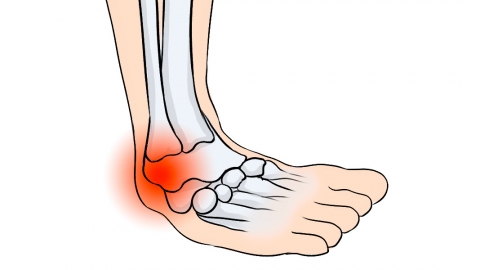What causes pain in the big toe joint when walking?
Generally, pain in the big toe joint while walking may be caused by factors such as poorly fitting shoes causing compression, long-term improper walking posture, bunionitis, gouty arthritis, or hallux valgus deformity. It is recommended to seek medical attention promptly, identify the underlying cause, and receive symptomatic treatment under a doctor's guidance. Specific analysis is as follows:

1. Compression from ill-fitting shoes: Wearing shoes that are too narrow, tight, or pointed can continuously compress the big toe joint area during walking, leading to localized pressure and pain. Choose shoes with a wide toe box and soft uppers, avoid high heels or pointed-toe shoes, and allow sufficient space for the big toe joint to reduce compression.
2. Long-term improper walking posture: Excessive weight bearing on the inner side of the forefoot or uneven pressure distribution across the sole can increase stress on the big toe joint over time, resulting in pain. Consciously adjust your walking posture to ensure even weight distribution on the sole, and correct gait through slow walking exercises.
3. Bunionitis: The bursa at the big toe joint becomes inflamed due to prolonged friction and compression, leading to aseptic inflammation. During walking, the inflamed area is irritated, causing redness and swelling, along with pain. Patients may follow medical advice to take medications such as ibuprofen sustained-release capsules, diclofenac sodium enteric-coated tablets, or celecoxib capsules to reduce inflammation.
4. Gouty arthritis: Abnormal uric acid metabolism leads to deposition of uric acid crystals in the big toe joint, triggering inflammation. When walking, pressure on the joint irritates the inflamed site, causing severe pain. Patients should follow medical advice to take medications such as colchicine tablets, febuxostat tablets, or benzbromarone tablets to lower uric acid levels and reduce inflammation.
5. Hallux valgus deformity: Abnormal bone structure at the big toe joint causes the big toe to deviate outward. During walking, increased friction and pressure on the deformed area lead to pain. Mild deformities can be improved with hallux valgus correctors; severe cases may require surgical correction to realign the bones, restore normal foot structure, and relieve pain.
In daily life, avoid prolonged continuous walking and take appropriate breaks to relax the feet. Soak your feet in warm water for 10–15 minutes each evening to promote blood circulation in the feet. You may also gently massage the big toe joint area to relieve local muscle tension and reduce pain episodes.




